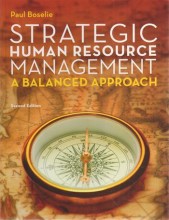International Human Resource Management
13 important questions on International Human Resource Management
What is offshore outsourcing?
IHRM is manifested at different levels
- Individual employee level (expatriate management)
- Site level (businessunit)
- Organizational level (multiple sites in a country and across countries)
- National level (labour legislation and CBAs)
- Regional or Continental level: (cultural differences)
- International level: (legislation and the UN)
Hofstede classifies countries througH cultural maps:
of countries on different dimensions
•Individualism-Collectivism: (the degree to which individuals look out for themselves first and the organization and society next);
•Masculinity-Feminity: (e.g. aggressiveness and assertiveness);
3. Power distance: the degree to which individuals accept unequal distribution of power
4. Uncertainty avoidance: the way individuals accept and deal with uncertain situations and their willingness to make decisions in uncertain situations.
- Higher grades + faster learning
- Never study anything twice
- 100% sure, 100% understanding
Hofstede classifies countries througH cultural maps:
of countries on different dimensions
•Individualism-Collectivism: (the degree to which individuals look out for themselves first and the organization and society next);
•Masculinity-Feminity: (e.g. aggressiveness and assertiveness);
3. Power distance: the degree to which individuals accept unequal distribution of power
4. Uncertainty avoidance: the way individuals accept and deal with uncertain situations and their willingness to make decisions in uncertain situations.
Sharing knowledge and experiences between employees on a global scale is a powerful instrument for increasing the MNC's global performance.
o Access to the network of employees
o Employee knowledge and skills to operate the knowledge information system
o The willingness of employees to share knowledge and experience with others
o Cross-cultural awareness and good communication among employees.
There are two paradigms within IHRM: universalist and contextual paradigm. What are its differences?
Contextual paradigm assumes that there might be some general best principles in HRM, but they need to be adapted to the organizational context within a given country.
What are cross-cultural and institutional differences?
Institutional differences are differences between countries based on legislation, procedures and stakeholders (trade unions).
What are the four criteria on which Hofstede has based his cultural map?
- Masculinity vs femininity
- Power distance; the degree to which individuals accept unequal distribution of power
- Uncertainty avoidance; the way individuals accept and deal with uncertain situations.
Later on there were two more criteria added, respectively:
- Long term vs short term
- Indulgence
What is the difference between global and local strategy?
The local strategy is a people management strategy within an MNC adapted to national or regional contextual factors.
What is the difference between convergence and divergence issues in HRM?
Divergence issues are issues regarding the HR practices that will grow further apart. These differences are caused by cross-cultural and institutional differences.
What are the five requirements of knowledge transfer within a global organization?
2. Employees have access to the network
3. Employee have knowledge and skills to operate with the system
4. The willingness to share knowledge
5. Cross-cultural awareness and good communication among employees.
What is the difference between outsourcing and offshoring?
Offshoring means you relocate business activities to other countries and regions.
What does offshore outsourcing mean?
The question on the page originate from the summary of the following study material:
- A unique study and practice tool
- Never study anything twice again
- Get the grades you hope for
- 100% sure, 100% understanding
































